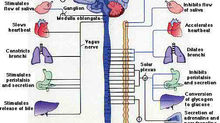Immune System Paper Extract
- Auto Immune Paper Extract
- Jan 10, 2016
- 3 min read
Came across this interesting section on the immune system, enjoy!
The Immune System and the Brain: Research Findings Recent studies have shown that nearly all antigens in human cells can generate autoimmunity. However, the body has developed various mechanisms that have induced tolerance of our immune system to such antigens. Specific immune system mechanisms ensuring tolerance to cells and tissues of one’s self appear during the development of lymphocytes, also called B cells. This happens in the bone marrow where B cells are generated and also on the migration of these B cells to peripheral tissues. Some B cells go through the thymus gland and become specialized in specific activities. These specialized cells are called “T cells”. There are two types of T cells: T helper cells that help the B cells in producing antibodies that attack and destroy the invading pathogenic organisms (bacteria, viruses, fungi, etc.) and T suppresser cells that are designed to reign in the B cells and the T helper cells when they become too aggressive. It is postulated that one mechanism that operates in the development of autoimmune disorders involves an immune system that has lost its natural balance either by weakening of the T suppresser cells response or by an over production of B cells and T helper cells, which may be involved in producing antibodies that mistakenly attack the organism’s own cells and tissues, failing to identify them as part of its own self organism. It is still unclear why certain types of tissues are selected to be attacked (Lipsky & Diamond, 2005). George Solomon (1964, 1968, 1974, 1981) of Stanford University was the first American physician who studied the interaction between the mind and the immune system. Solomon was working in the 1960’s treating patients with rheumatoid arthritis and he observed that these patients would typically enter into a relapse during stressful times in their lives. He hypothesized that the immune system must be somehow triggered to attack the patient’s joints during times of stress. He then hypothesized that our immune system must be very sensitive to stress and responsive to emotions and thoughts. In the 1970’s, psychologist Robert Ader and his colleague immunologist Nicholas Cohen both from the University of Rochester School of Medicine, managed to conduct an ingenious set of experiments in mice whereby they were able to demonstrate the conditioning of immune system responses. A group of mice were given an injection of the immune suppressant drug cytoxan. This was coupled with an exposure to saccharin sweetened water, which the mice drank. After feeding sweet water to the mice, suppression of the immune response was demonstrated even 14 days later, when the mice were given an injection of saline coupled with an exposure to saccharin sweetened water. An injection of saline alone without the exposure of sweetened water did not produce the same immune system suppression (1975). Later, Ader and Cohen (1981, 1982, 1985) studied a group of rats who had lupus erythematosus. Ader was able to condition the rats to reduce their immune system aggressiveness towards their own cells. The results were an impressive clinical reduction in the rats’ symptoms of acute lupus inflammation. Later, Karen Olness (1992) was able to use this model in helping a young girl suffering from lupus by conditioning her immune system to be suppressed and cutting the planned chemotherapy treatments from 12 to 6, achieving a significant clinical improvement that lasted for over 5 years. 160 Mind-Body Imagery Auto-Immune Disorders It is understood today that the mind affects the immune system by secreting neurotransmitters and hormones that activate specific receptors on the surface of T and B lymphocytes. This activates certain intracellular mechanisms that either suppress or enhance their activity as cells of the immune system response. Some have referred to these specific molecules that are secreted by the central nervous system that affect the immune system as neuroimmunotransmitters. Bowers and Kelly (1979) reported that the immune system can become dysfunctional in the following ways: Underactive (suppressed), Hyperactive (enhanced) or Misguided (confused). When the immune system is suppressed, individuals become more susceptible to infections and malignant proliferative diseases. When the immune system is abnormally enhanced, individuals are predisposed to many allergies and possible bronchial asthma. When the immune system is confused, individuals are predisposed to autoimmune disorders such as multiple sclerosis or lupus. The brain’s connection with immune system is believed to be mediated through the limbic-hypothalamic-pituitary pathway. The immune system responds through the secretion of hormones and other specific chemicals that act as neuroimmunotransmitters, thereby delivering specific messages from the central nervous system to the immune system. Booth and Ashbridge (1993) proposed that the immune and nervous systems are a single integrated entity with a common goal of establishing and maintaining a self identity.









Comments